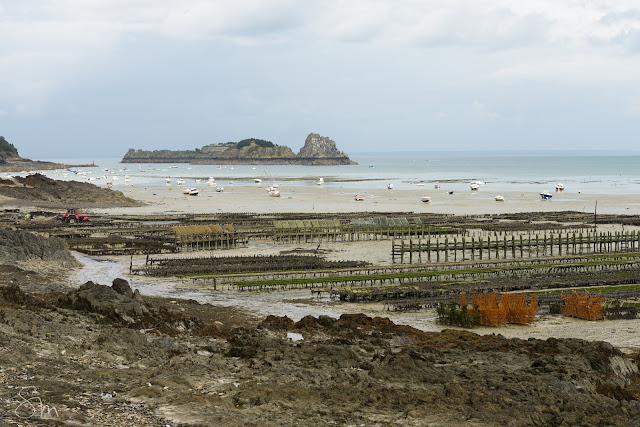Ebb and flood, low tide and high tide, form the basis for all living things in Bretagne.
Two characteristic industries make use of this phenomenon: the oyster farmers and the salt farmers.
This is about the oysters, these little glibbery molluscs that taste surprisingly well, once you have overcome a natural aversion of eating something alive and so ugly. And they will die a cozy death in the warm wet mucous comfort of a human mouth, won't they? There should be a poem about the oyster: cool and smooth, soft, a fine and subtly sweet taste, slightly salty, a reminiscence of grapefruit and cucumber, with a gelatine-like consistency. I can understand their reputation for supporting male Casanovas but I feel they might be equally potent for women ...
Creuses, the Pacific Oysters.
Plates, their European sisters, taste even better, they are the rarest and best.
Plates, their European sisters, taste even better, they are the rarest and best.
Oysters are raised in bags laid out on oyster tables in the tidal zone.
Work hours depend on the tide time table. Bags need regular turning to loosen the oysters because oysters tend to cling and grow together.
Farming the ocean floor
It is hard to believe looking at their living conditions in the brackish mud, but oysters from the Belon river taste the best.
The bay of Cancale has several hectars with oyster farming that are only visible for a few hours during low tide.
Before being shipped or sold on the market, oysters have a resting period in clean sea water to bring out their natural flavours.
Hand to mouth
Hand to mouth
Locals harvest "escaped" oysters during low tide.
Enjoy!
Enjoy!













No comments:
Post a Comment